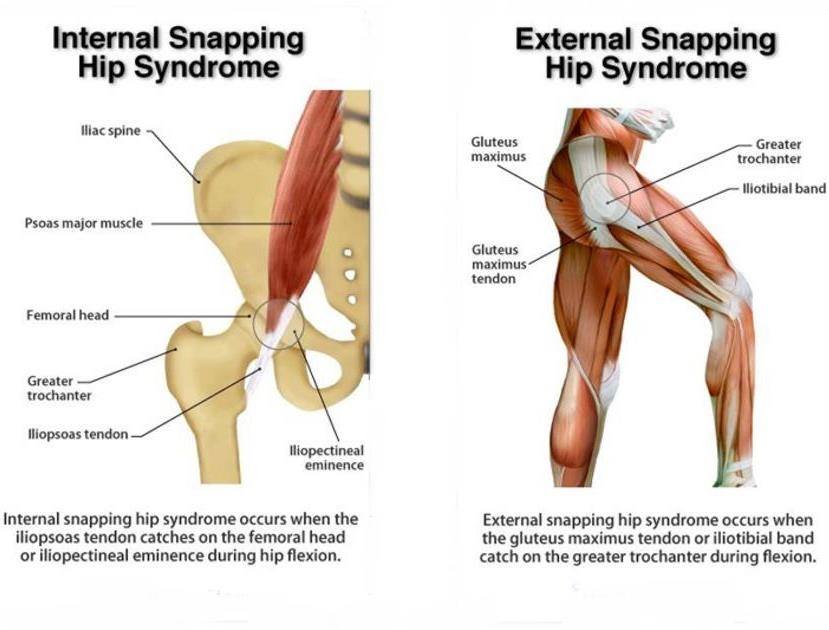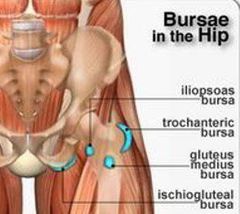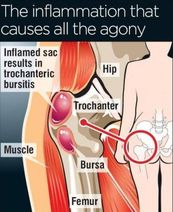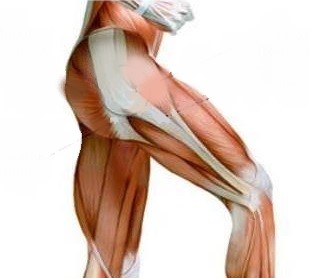Snapping Hip Syndrome

There are two types of snapping hip syndrome.
• Internal snapping hip syndrome (iliopsoas tendonitis)
• External snapping hip syndrome (gluteus maximus/IT band rub against the head of the thigh bone)
Iliopsoas tendonitis is inflammation of the tendon due to trauma, overuse and repetitive hip flexion and is often seen in dancers, gymnasts and runners. The inflamed tendon rubs on the hip bones causing pain, stiffness and a snapping sensation with flexion and extension of the hip.

Iliopsoas bursitis, or inflammation of the iliopsoas bursa, is also linked to snapping hip. Bursae are small, fluid-filled sacs that sit between bones and soft tissues, which cushion the joint and reduce friction.

RISK FACTORS:-
• Women
• Elderly
• Overuse of the joint
• Standing for long periods of time
• prior hip injury and/or surgery
• Scoliosis, spinal arthritis, and other spinal issues
• Legs that are different lengths
• Rheumatoid arthritis
• Bone spurs or calcium deposits
SYMPTOMS:-
• Pain and tenderness in front of hip, and sometimes the upper thigh, which gets worse when bending the hip eg. walking, climbing stairs, squatting, sitting, etc.
• Pain is initially sharp but turns into a dull ache
• Clicking/snapping at the front of the hip
• Tenderness in hip and groin
TREATMENT:-
• Rest – usually for 2-3 weeks
• Anti-inflammatory analgesia
• Steroid injections
• Physiotherapy
• Crutches for support
PREVENTION
Always warm up and cool down when doing exercise, and if starting a new exercise programme build up gradually. Doing regular stretches will also strengthen the hip flexors and improve flexibility.

